With much of the country still well in the midst of what is beginning to seem like an interminable winter, cabin fever has sent many of us out to the stream on days which would typically keep us indoors in the warmth and comfort of home. Fishing on those frigid days can be frustrating at times. You're cold. The fish are lethargic. Conditions are tough. And your rod guides and tip keep icing up, causing you to have to break from fishing to clear the ice. Patience can wear thin.
Although there's nothing you can do to improve the cold temperatures, sluggish fish and lousy conditions, you can put a dent in the frustrations that come from iced up tips and guides by experimenting with one or more of the remedies below.

Stanley's Ice Off Paste
This is the only remedy of the few listed here that is actually made for the topic at hand. A Loon Outdoors product, Stanley's Ice Off Paste is designed for the sole purpose of keeping ice off fly rod guides. According to Loon, it is the only product designed with this goal in mind. As such, it is a specialty product, and thus comes at a premium price. You'll pay $7.50 for a small container of paste which you smear on to your guides before hitting the water and as needed while the day goes on. Although the price isn't exactly wallet bursting, it is significantly pricier than the other available remedies. For that price jump, however, you'll get a product that is designed for, tested on and declared safe for your rod and fly lines by a company that makes nothing but fly fishing products.

Chap Stick
Chap-stick lip balm and other similar products are a favorite homemade remedy of many fishermen for preventing, or at least delaying, icy buildup on rod guides. Similar in consistency to Stanley's Ice Off Paste, Chap-stick will significantly cut down on the amount of ice that builds up on your guides. While there's no evidence regarding how the ingredients in lip balms will affect the resins on your rod and the coatings on your fly line over time, the reality is that gear won't likely see enough exposure to those ingredients -- unless you're very frequently out fishing in icy conditions -- to make a difference. Some anglers have voiced concerns about the potential fish-chasing effects of lip balm scents/odors disseminated into the water, but we're betting these worries are likely overblown as well.

PAM Cooking Spray
A noted favorite of steelheaders, many of which claim it to be the ultimate rod de-icer, PAM cooking spray has been shown to help slow the build up of ice. And, as you likely guessed, there's no reason to go name brand here. Grab the cheap store brand stuff. Spray it on before hitting the water, and if you're so inclined, carry it along for reapplications throughout the day. When re-applying on the stream, you'll want to be sure that your guides are clear of ice as dry as you can conveniently make them, to help the spray adhere.
One Other Thing
If you're clearing icy buildup from your rod guides or rod tip by snapping or plucking it off with your fingers, please stop. This is no more than a recipe for a broken guide, not to mention a tedious waste of time. Instead, simply dip the rod into the water, which is warmer than the air and allow it to melt the ice away.





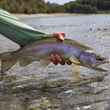
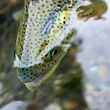




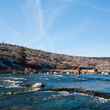








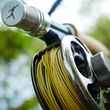







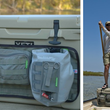
Comments
Aileen Lane replied on Permalink
I have heard about the chapstick and Pam Spray - but never got around to doing that, actually, I was afraid to use them. LOL I opted to just dip my rod in the water. I will definitely look for the LOONS - would love to give that a try.
Chad Shmukler replied on Permalink
What's the worst a little olive oil could do?
Aileen Lane replied on Permalink
I wouldn't use PAM for my food. It contains propellant. Probably better to bring a small bottle of pure, virgin olive oil instead?
Chad Shmukler replied on Permalink
Olive oil in an empty floatant bottle, perhaps? Why not?
Certainly more portable than a can of PAM.
Aileen Lane replied on Permalink
That will work! =)
HmgFlys replied on Permalink
Paste type fly float and fly line cleaner also works and lubricates your line in the process.
Geffery Luttrell replied on Permalink
Reel magic and almost any of your silicone lubes work well at minimizing icing...the paste type silicone reel lube is super.
cement replied on Permalink
Dip your rod in the water? This is a joke right? As soon as you pull your rod out of the water now the whole thing is frozen. Not to mention the water that runs down onto your grip and gloves.
Chad Shmukler replied on Permalink
Not a joke at all.
Once your rod/eyelets/guides are iced up -- especially if they're iced up good -- trying to pry it off can be bad news. Dipping the rod is, we've found, the best way to loosen that ice. Once the ice melts a bit, you can remove it by hand without fear of breaking any of the rod components and then apply your preferred ice-preventative.
bob volpe replied on Permalink
I may be showing my age here, but try Mucilin.
It's a floatant & line dressing that has been around since the dawn of time. It comes in two varieties Red label and Green label. The Green label is what you want as it contains silicone, The Red was designed for silk fly lines.
Works great as a dry fly dressing in summer too.
Jason Klass replied on Permalink
Or you could just use a tenkara rod which has no guides to freeze in the first place.
Steve replied on Permalink
Ya, you just have ten telescoping sections frozen frozen in place instead
Tawanda replied on Permalink
No thanks. I prefer actual fly fishing and my having testicles prevents such a feminine move.
Fred replied on Permalink
isn't that a bit inconvenient, rubbing the guides with your testicles?
Eric replied on Permalink
Tenkara is feminine? That's a new one. And the sections don't freeze together since nothing wet contacts them unless you, for whatever reason, put your rod in the water.
jasonc replied on Permalink
silicone spray works great and lasts longer than anything else we have found yet.
Phil replied on Permalink
Rain-X. Apply to dry guides with a cotton Q Tip Let dry. Rub with a dry Q-Tip one hour later. Treat the blank as well if needed. Works great!
Jason mendola replied on Permalink
Walmart also sells a spray designed to keep ice from building up. It's 6 dollars and I've used the same can for 3 seasons now
Pages